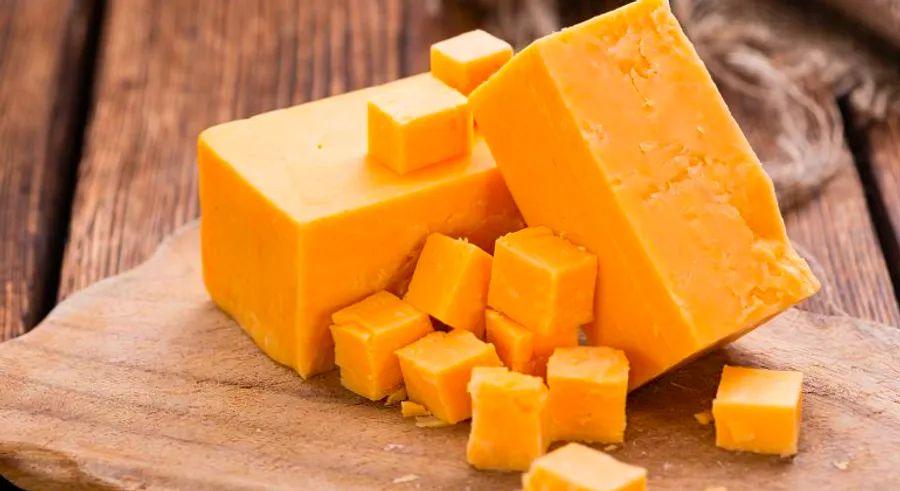The Cheddar Dynasty: The Rise of a Global Cheese Powerhouse

The lush, rolling hills of Maryland Farm in Somerset, England, set the stage for Daniel Barber’s cheese-making journey, which began in 1833. Nearly two centuries later, his family’s Barber’s Farmhouse continues to thrive, holding the title of the world’s oldest cheddar producer.
"This valley is one of the UK’s most fertile and heavily cultivated dairy regions," says Giles Barber, managing director of Barber’s Farmhouse and the great-great-great-grandson of Daniel Barber.
"We have numerous small farms, most of which are still family-owned." Fifteen miles away lies the village of Cheddar, where early cheesemakers utilized limestone caves and gorges as natural coolers. While Cheddar gave its name to the cheese, historians note that the style of cheese itself developed across the region.
Today, Barber’s Farmhouse is one of the few producers authorized to sell cheese labeled as West Country Farmhouse Cheddar, a Protected Designation of Origin (PDO) with stringent standards. When crafting their Barber’s 1833 cheddar, a PDO-certified cheese, the producers still employ techniques that Daniel Barber himself would have recognized.

The milk used comes from local dairy herds, and the cheese curds are still turned by hand. Rejecting the use of freeze-dried cultures, Barber's Farmhouse preserves traditional cultures—bacterial strains that transform milk's natural lactose into tangy, flavorful lactic acid.
In today’s world of mass-produced, globally distributed food, Barber’s Farmhouse harkens back to a time when flavors and culinary traditions were deeply rooted in local regions.
Even in 1833, when Daniel Barber first began selling cheese, he was unknowingly contributing to the evolution of Britain’s food system. His sharp, smooth cheddar was destined for global growth, fueled by immigration, technological advancements, and the preservation of tradition.
Two hundred years after the establishment of Barber’s Farmhouse in the countryside of Somerset, cheddar has become one of the world’s most beloved cheeses. Here’s how it gained such global fame.

Cheddar gets ready for the world stage
The picturesque Somerset region, home to both Barber’s Farmhouse and the village of Cheddar, has been crafting cheese since at least the 12th century. However, the early varieties bore little resemblance to the cheddar we know today.
Innovation was key – the introduction of heavy wooden presses and a cooking stage helped create the cheddar we recognize today, beloved by modern cheese enthusiasts.
"By the late 1700s, the essential technology was in place," says Paul Kindstedt, a cheese expert at the University of Vermont and author of 'Cheese and Culture: A History of Cheese and its Place in Western Civilization.' These innovations boosted the quality and shelf life of the cheese, making it easier to distribute far from its original farm.
"English agriculture began to shift towards shipping goods, including cheese, to the London market," says Kindstedt. "This shift required the development of cheeses designed for long-distance transport, given the technological constraints of the time."
The cheese that emerged was lower in moisture and larger in size, making it more resilient to damage during transport.
Somerset’s cheesemakers weren’t the only ones adjusting their products for transport, but by the late 1700s, they had outpaced competitors from Cheshire to dominate London’s cheese markets.
"Cheddar becomes the preferred cheese," says Kindstedt. "It was tailored for the market and crafted for transport."
The cheddar empire knows no bounds
As colonial immigrants spread across the globe, they carried English cheese-making traditions with them.
"Wherever the English settle, cheddar rules," says Kindstedt. In North America, many immigrants came from cheese-producing regions like the West Country and East Anglia, areas known for their cheddar-style cheeses.
In their quest to build new lives, immigrants opted for familiar, market-tested products from their homeland.
"Immigrants would simply refer to cheeses from their homeland by the same names once they arrived in the new world," he explains.
Before long, cheddar cheese from the colonies and the United States began to challenge the very foundations of cheese-making in Britain. In 1875, the US exported 100 million pounds of cheese to the UK. "The United States became England’s primary cheese supplier, effectively decimating the cheese-making industry in Britain," says Kindstedt.
It wasn’t just the US. Kindstedt points out that Canada eventually overtook the US as England’s top cheese supplier. "Australia and New Zealand also rose to prominence as major suppliers of English cheese, and it was all cheddar, cheddar, cheddar," he adds.
"Suddenly, cheddar became the most widely produced cheese across the globe."
When an American cheese was crowned the best in the world
Who doesn’t enjoy a good cheddar cheese?
Although cheddar holds a significant place in many former British colonies, it’s not universally adored across the vast territories once under British control.
Kindstedt suggests that cheddar’s uneven popularity partly mirrors the degree to which indigenous populations were displaced in former colonies.
"In places like America, Canada, Australia, and New Zealand – the colonization process effectively supplanted the native peoples," he explains. "The preference for English-style cheeses came naturally with the settlers who dominated the colonies." (In French-speaking Canada, Kindstedt points out, French-style cheeses remain particularly popular.)
In regions where cultural displacement was less significant, cheddar didn’t gain as much traction.
India has a rich history of fresh cheeses like paneer, but colonial rule didn’t make the country fall in love with cheddar. According to Kindstedt, it’s only in recent times that cheddar has begun to gain popularity in India.
In Kenya, another former British colony, cheese remains a small part of the local diet. (Lactose intolerance, common among people of Asian and African descent, isn’t the issue, as aged cheddar – like other hard cheeses – contains very little lactose.)
"The English were a small minority in those countries, while the Indigenous population was vast, so the English fondness for cheese didn’t lead to widespread acceptance, as it did in the United States and Canada," Kindstedt explains.
The rise, fall, and resurgence of cheddar
Cheeses aged by descendants of Giles Barber are now available in stores across the UK and at Whole Foods locations in the United States.
In the UK, cheddar remains the top choice among cheeses. It’s also the favorite in Canada.
However, in Australia, cheddar has been steadily losing popularity to other types. While factory-made cheddar reigned in New Zealand for years, many smaller cheesemakers have shifted to producing other varieties.
In the United States, cheddar has officially lost its leading position. By 2006, mozzarella, part of the US Italian-style cheese production, surpassed American-style cheeses, including cheddar. Except for a brief dip in 2009, mozzarella has remained the top choice ever since.
The reason for cheddar’s decline in the US would likely have been more surprising to Daniel Barber than a visit to Whole Foods: frozen pizza.
"Cheddar didn’t necessarily decline," says Gordon Edgar, a cheesemonger and author of "Cheddar: A Journey to the Heart of America’s Most Iconic Cheese." "It’s just that more pre-made frozen foods have taken its place."
Many of the innovative frozen food items are now stuffed, topped, or filled with mozzarella. But mozzarella isn’t the only contender challenging cheddar’s supremacy. With a growing number of people turning to dairy-free alternatives for health or ethical reasons, vegan cheeses have become increasingly popular.

Is cheese good for you? Here’s what the experts have to say.
These new developments follow decades of rising industrialization across cheddar-producing countries, resulting in a wide array of mass-produced cheddars and cheddar-style processed cheeses that are a far cry from Barber’s traditional aged version.
“Cheddar was always about efficiency,” says Edgar. “It was central to agricultural initiatives in the U.S. and beyond, playing a crucial role in delivering affordable protein to people as quickly and efficiently as possible.”
While the earliest cheddars were crafted for transportation, they possessed a depth and complexity that distinguishes them from the mass-produced varieties we see today. In an effort to recapture that original flavor, cheesemakers from the U.S. to the U.K. and beyond have revived artisanal cheddar, bringing it back into the spotlight.
Recently, Edgar has noticed a resurgence in cloth-bound cheddar, which imparts a deeper flavor compared to cheese coated in wax or plastic. “Cloth-bound cheddar had virtually disappeared in the U.S., and there were only about three producers left in England,” he explains.
“Now, if you look around, there’s probably more cloth-bound cheddar than ever before.” This shift marks a return to tradition, with cheesemakers prioritizing craftsmanship over the historical focus on mass production, thus pushing cheddar’s evolution back in time.
By embracing this approach, cheesemakers sacrifice some of the efficiency that once made cheddar a dominant force in global markets for so long.
What they gain is clear to anyone enjoying a slice of artisanal cheddar, where the careful, time-intensive production process creates subtle flavors that reflect the unique characteristics of each region.
West Country Farmhouse Cheddar offers a rich, savory-sweet profile, while New England varieties are celebrated for their sharp, slightly bitter taste and extended aging. This is what cheesemongers refer to as terroir – the distinctive flavor of a place.
“There’s an elegance in the inefficiency of the process,” Edgar remarked. “What it delivers is something truly unique in terms of flavor.”

1

2

3

4

5
Evaluation :
5/5